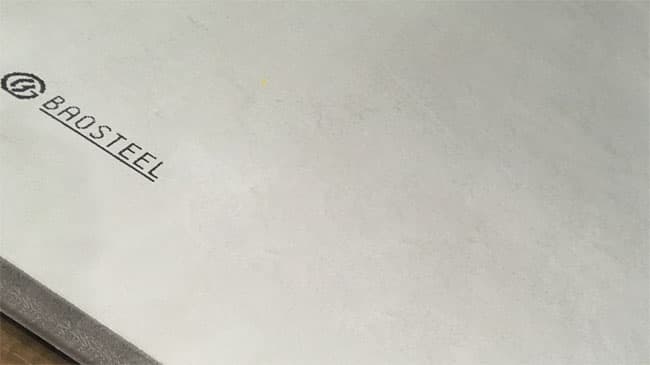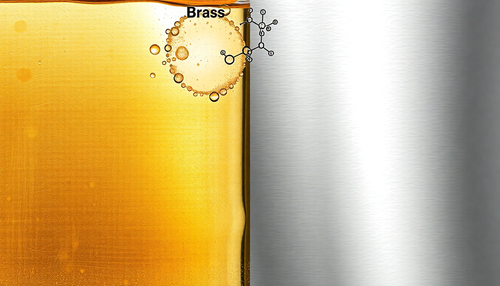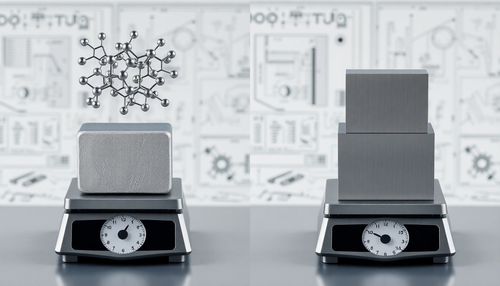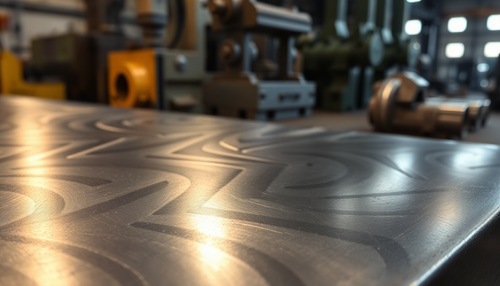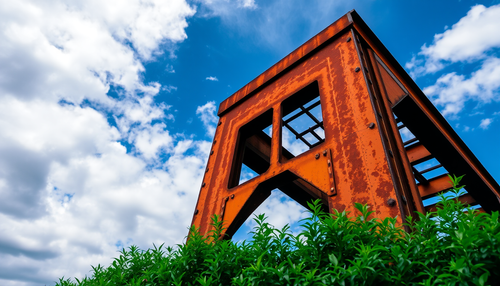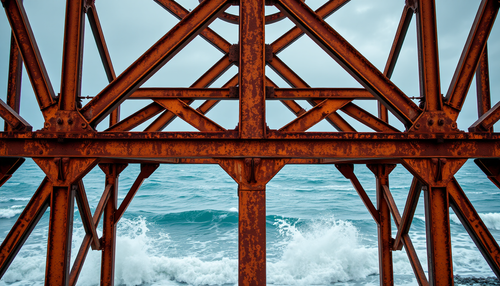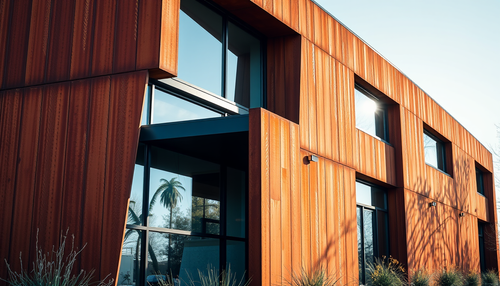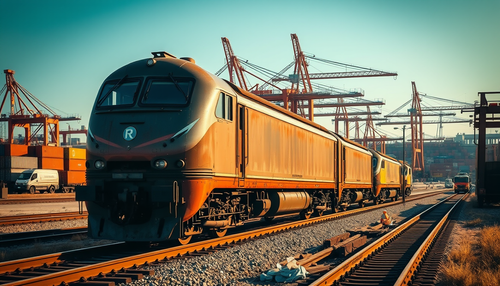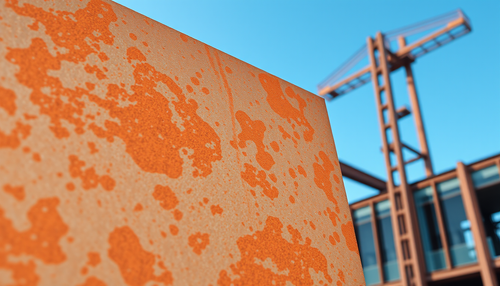30408 stainless steel, also known as S30408, is a stainless steel material widely used in pressure equipment. It is nationally recognized by the standard number 06Cr19Ni10.
This material, due to its excellent corrosion resistance, welding processability and comprehensive properties (including corrosion resistance and formability), is widely used in pressure vessel machine manufacturing and other related fields.
Among the various types of stainless steels, 30408 stainless steel is the most commonly used, often referred to as food grade stainless steel or 18/8 stainless steel.
Furthermore, 30408 stainless steel is not only applicable in industrial sectors such as chemical, food, pharmaceutical, papermaking, petroleum and nuclear energy, but also widely used in manufacturing components for construction, containers and vehicles.
Its chemical composition mainly includes elements such as chromium (Cr), nickel (Ni), manganese (Mn) and silicon (Si), which give it excellent corrosion resistance and resistance to high temperatures.
It is important to note that although the price of 30408 stainless steel may be a little higher than that of 304 stainless steel, in terms of scope of use, S30408 can replace 304, but not vice versa. This indicates that 30408 stainless steel offers greater value and applicability in certain applications.
There are three main differences between S30408 stainless steel and 304 stainless steel:
- The UNS numeric code for S30408 is 06Cr19Ni10, while the UNS numeric code for 304 is S30400;
- The chemical composition of S30408 differs from 304 in terms of carbon (C), phosphorus (P), sulfur (S) and chromium (Cr) content;
- The mechanical properties of S30408 and 304 are slightly different, specifically in terms of yield strength.
So which is better – S30408 or 304? And what are the differences between them? It is important to consider the safety of using these materials in food applications. I will delve into these three points in more detail.
Is S30408 equal to 304?
Is S30408 stainless steel the same as 304?
S30408 is a designation for one of the austenitic stainless steels according to the UNS numbering system.
S30408 stainless steel is equivalent to 06Cr19Ni10, which is a common type of stainless steel material.
The corresponding UNS number for 304 is S30400, so S30408 and 304 are not identical.
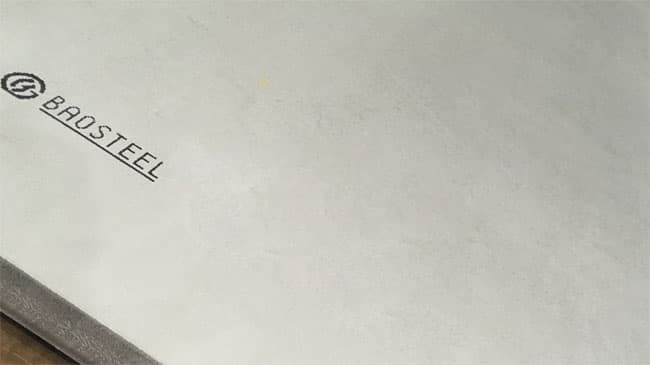
Origin of S30408
The UNS numbering system is a system that assigns numerical codes to 18 different series of metals and alloys. The UNS number consists of a single-letter prefix followed by five Arabic numerals. The prefix letter usually represents metallicity, such as “S” for stainless steel. The following number, such as 304, is the class code that indicates the Cr Ni content of 300 series austenitic stainless steel.
Different percentages of Cr Ni content result in different quality codes such as 301, 316 and 321. Therefore, S30408 is the UNS numeric code for stainless steel with a specific percentage of Cr Ni content.
Chemical composition difference between S30408 and 304
| Default name | UNS Code | Note | W | Mn | P | s | Yes | Cr | No | N | |
|---|---|---|---|---|---|---|---|---|---|---|---|
| American Standard | ASTM A240M-15a | S30400 | 304 | 0.07 | 2:00 | 0.045 | 0.03 | 0.751 | 7.5-19.58 | 8.0-10.5 | .. |
| Chinese pattern | GB/T24511-2017 | S30408 | 06Cr19Ni10 | 0.08 | 2:00 | 0.035 | 0.015 | 0.751 | 8.0-20.08 | 8.0-10.5 | 0.1 |
| Japanese standard | JISG4305:2012 | SUS304 | 0.08 | 2:00 | 0.045 | 0.03 | 1.00 | 8.0-20.08 | 8.0-10.5 | .. | |
| European Standard | EN10028-7:2016 | 1.4301 | 0.07 | 2:00 | 0.045 | 0.015 | 1.00 | 7.5-19.58 | 8.0-10.5 | 0.1 | |
Note: The proportion is expressed as a percentage, that is, “%”. Unless otherwise stated, the components listed in the table are maximum values.
The chemical composition of S30408 and 304 stainless steel is slightly different. For example, 304 requires a lower carbon content, while S30408 requires lower levels of phosphorus and sulfur, and a higher chromium content.
The chemical composition standards for S30408 and 304 materials can be found in the S30408 and 304 chemical composition comparison table above.
Both S30408 and 304 stainless steel are considered food-grade materials and meet national standards for food-grade stainless steel.
In terms of safety, both S30408 and 304 stainless steel can be used in items such as kettles, children's cups, food containers and kitchen utensils.
30408 Stainless Steel vs 304 Stainless Steel
Differences in terms of performance
What are the main differences between 30408 stainless steel and 304 stainless steel in terms of performance?
The main performance differences between 30408 stainless steel and 304 stainless steel are reflected in the following areas:
1. Differences in chemical composition:
30408 stainless steel differs from 304 stainless steel in terms of chemical composition. Specifically, 30408 requires lower phosphorus and sulfur content as well as higher chromium content.
Furthermore, 30408 belongs to the 304L series, with a chemical composition of mainly 18% Cr, 8-12% Ni and 0.03% or less C. Compared with 304, 30408 has a slightly higher Ni content, but a lower carbon content.
2. Corrosion resistance:
The corrosion resistance of 30408 is slightly higher than that of 304 stainless steel. This may be due to its higher nickel content, which helps improve corrosion resistance.
3. Strength and high temperature resistance:
The strength and high temperature resistance of 30408 are superior to that of 304 stainless steel. This means that 30408 performs better in environments with higher temperatures and pressures, making it suitable for more demanding applications.
4. Differences in usage:
Due to the performance differences mentioned above, 30408 is more commonly used in high-end machinery, aerospace, military and other fields. Meanwhile, 304 stainless steel is widely used in various industrial fields, including but not limited to food processing and architectural decoration.
2. Differences in mechanical properties
Mechanical properties of austenitic steel after solution treatment at room temperature
| Numeric code | S30408 | ||
| Note | 06Cr19Ni10 | ||
| Specified plastic extension force RPo. 2/MPa | No less than | 220 | |
| Specified plastic extension strength RP1.0/MPa | 250 | ||
| Tensile strength Rm/MPa | 520 | ||
| Elongation after fracture A% | 40 | ||
| Hardness value | HBW | No greater than | 201 |
| HRB | 92 | ||
| High voltage | 210 | ||
Mechanical Test Requirements
| Yield strength | Tensile strength | Elongation by 2 in or 50 mm. min | Hardness.max. | |
|---|---|---|---|---|
| MPa | MPa | % | BrinellHBW | Rockwell |
| 205 | 515 | 40 | 201 | 92 HRBW |
In terms of mechanical properties, there is little difference between S30408 and 304 stainless steel. The yield strength, tensile strength, elongation and hardness of the two can be compared and analyzed by referring to the table above.
Mechanical properties limit the use of materials, and the strength and hardness of cold-rolled 304 stainless steel coils are superior to those of S30408 hot-rolled stainless steel coils, although the latter has better processing performance and plasticity.
It is important to note that S30408 stainless steel coils are mostly hot rolled, while the plasticity of cold rolled 304 stainless steel is reduced, affecting its stamping performance.
Welding processing performance of 30408 stainless steel
The welding processing performance of 30408 stainless steel is mainly manifested in the following aspects:
Excellent weldability and ductility:
30408 stainless steel features superior weldability and ductility, making it widely used in manufacturing pressure vessels and high-temperature pipelines. This material is not only suitable for room temperature welding operations, but also maintains its mechanical properties in high temperature environments, meeting the demands of specific industrial applications.
Low temperature resistance:
Austenitic stainless steel S30408 features robust low temperature resistance, which implies that even at lower temperatures, its welded joints can maintain stable mechanical properties. This makes it suitable for applications in low temperature environments such as liquefied natural gas.
Intergranular corrosion resistance:
During the welding process, the use of specific welding rods can ensure that the welded metal has good resistance to intergranular corrosion. This is especially important for equipment that needs to be used in corrosive environments for a long period, such as Cr19Ni9 and Cr19Ni11Ti stainless steel applications operating at temperatures below 300°C.
Manufacture of equipment and machines with highly comprehensive performance requirements:
Due to its excellent welding processing performance, S30408 stainless steel is widely used in the manufacture of pressure vessel type mechanical equipment. This material not only meets corrosion resistance requirements, but is also favored for its excellent formability.
30408 Stainless Steel Applications
In the construction and vehicle manufacturing sectors, applications for 30408 stainless steel include:
Construction Industry: S30408 stainless steel pipes are widely used in the construction of plumbing systems, especially for water supply, drainage and HVAC systems. These stainless steel pipes, with smooth inner walls, high temperature resistance, corrosion resistance and easy-to-clean advantages, ensure the health safety of the water supply system.
Automobile manufacturing: In the automobile manufacturing field, the use of high-strength stainless steel materials can significantly reduce the weight of the vehicle and at the same time increase the strength of the paint structure. Furthermore, the use of stainless steel in the vehicle's panels and decorative parts not only reduces maintenance costs, but also improves the vehicle's corrosion resistance.

